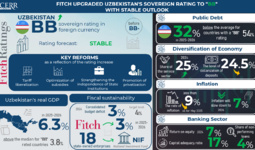Analysis of Trends in the Banking Sector of Uzbekistan for Q1 2025
CERR has updated its “Bank Activity Index” for Q1 2025, covering 35 commercial banks in the country. The index was calculated using a revised classification of banks by size of operations: 20 large and 15 small. These changes reflect the transformation of the banking sector, as well as efforts to increase transparency and coverage.





















leave a comment